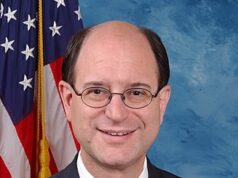Remarks by Counselor Stegman at the 2013 Illinois Governor’s Conference on Affordable Housing
As prepared for delivery
CHICAGO, IL – April 24, 2013 – (RealEstateRama) — It is an honor to be with you today for a whole lot of reasons. Chicago is one of my favorite cities, and so I was excited to be here last year on one of my first official trips to witness first-hand how our homeownership preservation fairs are helping distressed borrowers save their homes through affordable loan modifications, and I am pleased to say that we will be back again to host a similar event on May 16.
Also, prior to joining the Obama Administration, I had the privilege of working in Chicago for one of the world’s great philanthropies, the MacArthur Foundation, where I served as Director of Policy and Housing under the gifted leadership of president Bob Gallucci, and my boss, Vice President of U.S. Programs, Julia Stasch. Many of you know Julie because of her life-long commitment and support of affordable housing through the Foundation’s housing investments, research, and policy initiatives.
And to top it off, I couldn’t be more pleased to be here because there are no public institutions more central to meeting our housing challenges than state housing finance agencies. And there are none better than the Illinois Housing Development Authority, which has been guided by the terrific leadership of Mary Kenney.
And there are few state-wide affordable housing networks in the country that are as impressive as the Illinois Housing Council, which has been so ably led by Andrea Traudt.
So, for me, it just doesn’t get any better than this – serving as a keynoter at an affordable housing conference co-sponsored by IDHA and IHC, and organized by a public servant with an unparalleled commitment to expanding housing opportunities for those that need it most – Governor Pat Quinn. So, thank you all very much for allowing me to share with you some of the important work we are doing in affordable housing.
Given my role in Treasury as housing finance counselor to Secretary Lew, it’s probably no surprise to hear that I meet frequently with a wide range of stakeholders from the world of housing, including researchers, market analysts, financial industry experts, investors, advocates, and legislative leaders and their staffs from both sides of the aisle. Taking the pulse and gaining insights from all of these players is an essential part of my job.
In my sixteen months at the Treasury, I have met with state housing finance agency leaders on five separate occasions. And I can tell with confidence that there will be more such engagements in the future given the important role that organizations like IHDA play in helping address the critical affordable housing challenges facing our country.
For decades, HFAs have done this by providing 2.6 million families with access to low-cost mortgage credit to buy their first homes, and every year, they provide an average of 27,000 borrowers with critical down payment and closing cost assistance. And through their allocation of Low-Income Housing Tax Credits and issuance of private activity bonds, these essential organizations have helped finance the production of 2.9 million affordable apartment units.
Over the years, HFAs have matured and increased their value added in two important ways.
First, they have evolved in their thinking in purely project terms to setting priorities and using their resources to execute on locally-developed, needs-sensitive, affordable housing strategies.
Second, and equally importantly, in order to achieve better outcomes, leading HFAs like IHDA have deepened their financial and capital markets expertise, increased their investor base, enhanced their loan and asset management capabilities, and expanded their relationships with originators, investors, mortgage servicers, housing counseling agencies, and affordable housing organizations throughout their respective jurisdictions.
Since 1967, through the issuance of tax-exempt mortgage revenue bonds, IHDA has helped finance the production of approximately 225,000 units of low- and moderate-income rental housing – amounting to more than seven percent of the state’s total rental inventory.
In 2012, IHDA provided over 2,700 Illinois families with critical down payment and closing cost assistance to help them purchase their first homes.
Additionally, IHDA has shown us that innovation can flourish in the public sector.
Through its Preservation Now program, IHDA provides subordinate mortgage financing to tax-exempt bond projects that have an existing, project-based rental subsidy if the owner agrees to continue the rental subsidy. This novel approach has helped preserve critical affordable housing resources for the citizens of Illinois – 2,900 units in 2012 alone.
IHDA and counterparts across the country have also demonstrated their resolve and organizational adaptability through their outstanding collaboration with Treasury during and after the worst financial crisis since the Great Depression. The New Issue Bond Program, which allowed for the continued development and rehabilitation of affordable housing through the worst economic downturn in generations, is one of the most successful emergency housing programs that hardly anybody has heard of.
When it was launched in 2009, HFAs were struggling to maintain access to the tax-exempt bond market, jeopardizing the ability to fund their programs and initiatives. Treasury and the Administration recognized that sustaining the activities of state HFAs and maximizing the use of their local market knowledge and expertise was critical to helping low- and moderate-income families’ access mortgage credit as capital markets seized up and tax-exempt markets turned upside down.
Despite continued disruption in the tax-exempt markets, thanks to outstanding execution by participating HFAs, by the third quarter of 2011, NIBP had helped finance more than 100,000 single-family homes and more than 24,000 rental homes – results that compelled Treasury to extend this emergency program through 2012.
As we know, since the darkest days of the crisis, we’ve made tremendous progress. Fewer borrowers are falling behind on their mortgage payments or entering foreclosure. Distressed properties and shadow inventories are also declining.
A majority of housing market indicators have reversed their declines. Housing starts and home prices continue to recover. A recent S&P/Case-Shiller home price index for the 20 largest cities shows that home prices in January increased 8.1 percent compared with a year ago – the largest year-over-year increase in more than six years and the eighth straight month of year-over-year gains. Here in Chicago, home prices have increased more modestly – by 3.3 percent over the last year, notching the third straight month of year-over-year gains – but things are headed in the right direction.
Importantly, housing has contributed positively to GDP growth in each of the last six quarters, and forecasters expect that it will continue to be a positive force in growth, as the housing market continues to recover.
Yet, despite this encouraging news, Treasury and the Administration have not lost sight of the fact that major challenges remain. Although we’ve achieved significant progress, many homeowners continue to struggle – particularly in some of the hardest-hit communities and regions.
We have five key issues on our agenda that aim to alleviate the pain of these hardest-hit communities and regions and create a more sustainable system of housing finance.
First, we must continue helping as many responsible borrowers as possible refinance into affordable mortgages by taking advantage of today’s historically low interest rates. Refinancing can save a family up to $3,000 a year on their mortgage payments – the equivalent of a significant middle-class tax cut.
So far, more than 15 million borrowers have refinanced, and since its introduction by the GSEs and the Administration, the Home Affordable Refinance Program has helped more than 2.2 million underwater homeowners secure a lower-cost mortgage – putting more than $27 billion a year in real savings into the hands of American families and into our economy.
The reason why I mention HARP today is because among the more than two million underwater homeowners who are eligible to take advantage of the program but have not yet done so, many of them live right here in the Chicago metropolitan area. Of the 188,000 Illinois homeowners who could save up to $3,000 a year by refinancing through HARP, 165,000 of them – or 88 percent of the state-wide total – live in the Chicago region. I challenge all of you here today to help as many of these underserved, financially-burdened borrowers take advantage of this important housing resource.
However, as you know, HARP is limited only to GSE owned or guaranteed loans, and so we should do more to help the hundreds of thousands of households whose loans are not owned or guaranteed by Fannie Mae or Freddie Mac refinance out of their high-cost mortgages. Approximately 30 percent of these loans – held in non-agency trusts or on bank balance sheets – are higher-risk, interest-only, or balloon loans that could pose a greater risk of default.
As the President has said, whether a household can take advantage of today’s historically low interest rates should not be a matter of who owns their mortgage. Fundamentally, this is an issue of fairness, which is why the Administration would support legislation that would level the refinance playing field for all responsible American homeowners.
Second, we continue to take actions to address the plight of communities that are still suffering from the aftermath of the housing crisis.
Our Hardest Hit Fund program, which provides financial support to the hardest hit states and the District of Columbia through their respective housing finance agencies to develop locally-tailored programs to assist struggling homeowners, is gaining traction, and we will continue working with states to ensure that their programs reach those in the greatest need.
Treasury worked with HFAs to get programs up and running to assist homeowners. We knew that asking HFAs to move primarily from financiers of affordable homes to implementers of foreclosure prevention programs would take work. In many cases, it required the creation of new programs and infrastructure entirely from scratch, and the procurement of new resources and systems where none had previously existed, which understandably took time.
But here in Illinois, we’ve seen IHDA use HHF to provide $100 million in assistance to more than 7,100 troubled borrowers, with over 400 new applications being approved each month. And IHDA’s geographic reach has been no less impressive, thus confirming the benefit of using HFAs to administer HHF resources, with households in 95 of Illinois’ 102 counties accessing unemployment-related mortgage payment support through HHF.
Third, while lending was too fast and too loose in the run-up to the financial crisis, we’re now in a situation where many families that can effectively take on monthly mortgage obligations are being denied access to credit.
In this regard, the Federal Reserve has a similar outlook. Chairman Bernanke noted recently that tighter lending standards are probably preventing creditworthy borrowers from buying homes, which could be slowing the revival in housing and slowing the economic recovery.
Moreover, many creditworthy borrowers who are being denied mortgages today had their credit record damaged because a job loss or reduced wages from the financial crisis caused them to miss an auto or credit card payment.
These potential borrowers still meet GSE and FHA underwriting requirements, but are being under-served by many lenders. Barring families who suffered from economic events beyond their control the ability to obtain a mortgage, even after their lives and livelihoods have substantially recovered, neither serves their interests, nor promotes economic growth or financial stability.
Of course, we also recognize that a continuing impediment to expanding credit availability is lingering investor uncertainty, and working to address this issue continues to be an important part of our agenda.
As you know, the Consumer Financial Protection Bureau, along with other regulators, have released a collection of mortgage-related rules in the past months that cover different parts of the mortgage origination chain.
These include requiring lenders to verify a borrower’s ability to repay, setting best practice servicing standards, increasing transparency for appraisals, setting standards around originator compensation practices, establishing escrow requirements, and mandating the provision of disclosures, such as those relating to counseling for high-cost loan borrowers.
These standards will help homeowners obtain mortgages, with straightforward terms and obligations that both lenders and borrowers can clearly identify, providing for a more sustainable mortgage market going forward.
While investors, securitizers, originators, and servicers may not agree with every aspect of each of these new rules, their release helps provide clarity to market participants who may have been waiting for greater certainty before putting their capital back to work.
With the release of these final regulations, the rules of the road going forward are taking shape. Market participants can once again go about the business of taking on mortgage credit risk and serving a much broader swath of the market than has been the case since the onset of the financial crisis.
Fourth, despite severe fiscal constraints, the President proposes to make significant, strategic new investments in affordable housing because of its importance to families, communities and the economy.
These investments include making permanent and nearly doubling funding for Treasury’s New Market Tax Credit program, and securing $1 billion a year in permanent funding for the National Housing Trust Fund to build, preserve, and rehabilitate affordable rental homes for extremely low-income households.
The Administration’s FY 2014 budget also recognizes the foundational role played by the Low-Income Housing Tax Credit by including several improvements and refinements to this vital, Treasury-overseen affordable housing resource. The proposals would, among other things, let states increase their effective LIHTC allocation caps by up to 19 percent by converting a portion of their private activity bond cap to tax credits, add preservation of federally-assisted housing to the current list of selection criteria for states to consider in their annual allocation plans, let sponsors of tax credit housing adopt an income averaging plan to promote mixed-income housing, and, broaden investor demand and competition for tax credits by allowing real estate investment trusts to pass the credits through to their shareholders.
And again this year, the Administration proposes to authorize Ginnie Mae to securitize multifamily loans originated under the very successful FHA-Housing Finance Agency Risk-Sharing Program. Some experts predict that the Ginnie Mae “full faith and credit” guarantee would reduce mortgage interest rates by as much as 200 basis points, which would translate into lower rents and potential rent subsidy savings for federally-assisted apartments. As many of you know, the inclusion of this provision in the President’s budget is in no small part due to the efforts of Mary Kenney, who has eloquently made the case for the program in front of Congress on behalf of the National Council for State Housing Agencies.
Finally, the Administration proposes to replace the temporary Build America Bond program with a new permanent bond program called America Fast Forward Bonds. Critically, this program would provide HFAs an alternative funding alternative to the issuance of tax- exempt bonds. Like Build America Bonds, America Fast Forward Bonds would be taxable bonds issued by state and local governments, including HFAs, on which the Treasury Department would make direct payments to issuers in an amount equal to 28 percent of the bond’s coupon interest.
In closing, I would like to discuss the fifth housing issue on our agenda – our ideas behind long-term housing finance reform. Today, as you know, nearly nine out of ten mortgages are supported in some form by the American taxpayer, a situation that is both undesirable and unsustainable. The real challenge, however, is effectively revamping the system without severely disrupting the mortgage market and the ability of American families to access credit – a task made all the more delicate in the midst of a recovering housing market.
While we are still exploring which path will lead us towards the safest, most vibrant system of housing finance, we do know that a set of core principles will guide us along the way.
No matter what path we take to reform, Treasury and the Administration have core, fundamental, requirements that must be met. We support a system in which private capital is the primary source of mortgage credit that bears the primary burden for credit losses and strongly protects taxpayers. As Secretary Lew has stated, “We can’t ever again be in a place where American taxpayers are left responsible for mortgage financing practices that get of control.”
We also seek a system which provides American families access to sustainable mortgage credit, which must include long-term, fixed-rate mortgages, and which provides for credit availability under all conditions – even during times of severe market stress.
Any plan for housing finance reform must also meet the needs of our nation’s growing population of renters, promote the availability of sustainable mortgage credit in all communities, and serve borrowers across the income spectrum.
Comprehensive housing finance reform is not just about achieving any one of these priorities – it is about developing a system that achieves all of these priorities.
Given these core principles, it’s clear that no matter what path we take, HFAs should have a paramount role to play. IHDA and its counterparts have proven to be too strong, too important, too resilient, and too creative not to be counted upon as a strong partner in the future of our housing finance system, especially with respect to helping address the nation’s affordable housing needs. Thank you.
















